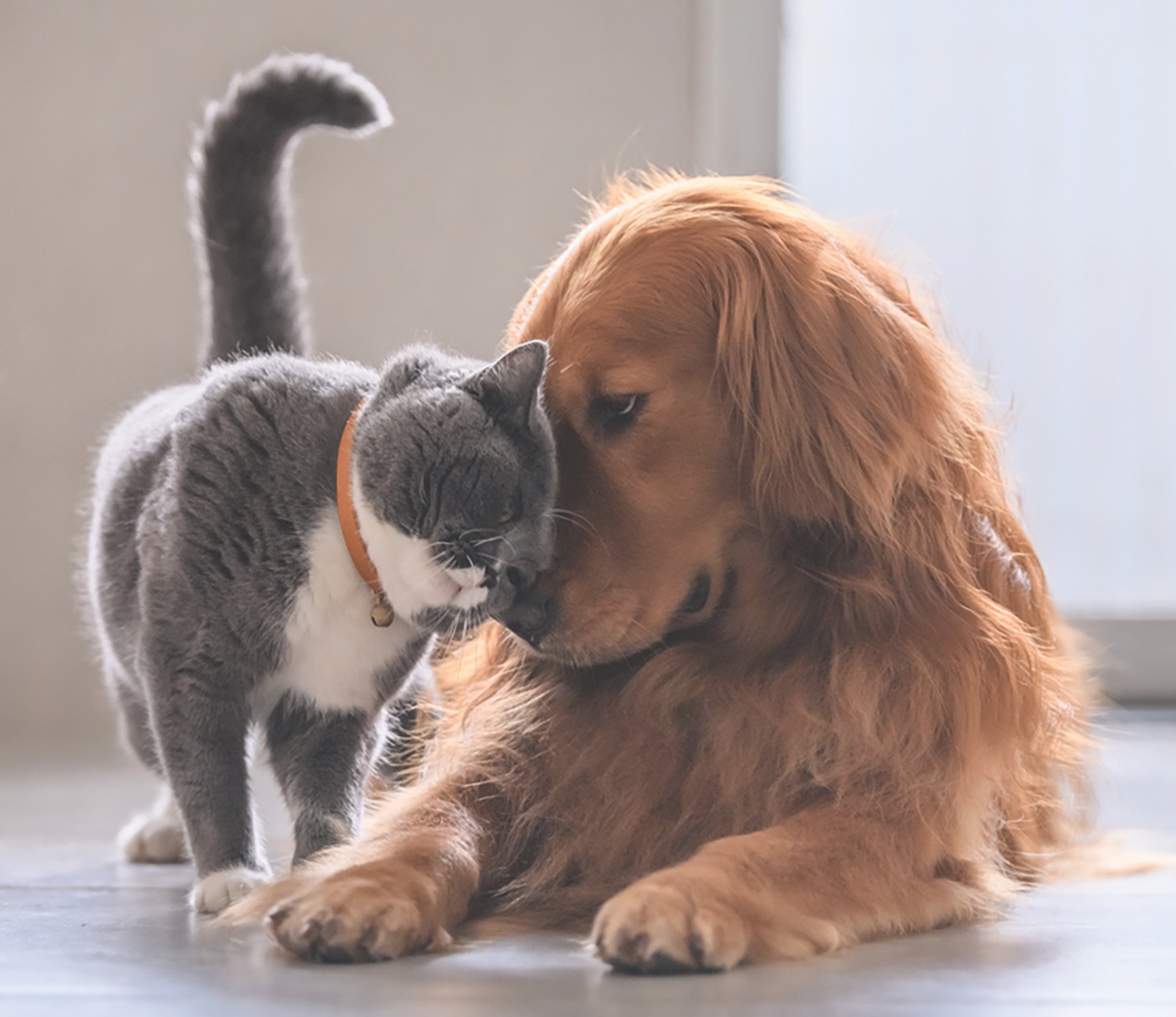Cats have strong opinions that can become apparent when you add a new pet. To avoid hissing, spitting, and scratched noses, “Be patient, do it slowly, and do not rush the process,” says Leni K. Kaplan, MS, DVM, of Cornell University’s Small Animal Community Practice. The introductory period will set the tone for the rest of your cat’s life with the new pet, so it is worth taking the time to make it a positive experience. Dr. Kaplan advises these steps to promote peaceful acceptance:
Choose wisely. “Try to ascertain whether a dog is cat friendly before bringing him into your home,” says Dr. Kaplan. Some shelters, rescues, and breeders can test dogs and puppies with cats before they are adopted out, or they may let you do a home visit with the dog to see how the animals interact. Some cats may never accept a canine friend, so a new cat may be a better choice.
And sometimes, adding a new pet just isn’t a good idea. “Keep in mind that some cats prefer to be the only pet in the household,” says Dr. Kaplan. If your cat turns into a furry ball of rage at the sight or sound of another animal, it may be best for everyone if she gets your full attention for the rest of her life.
Gates and secure getaways. Your cat needs to know that home is a place where she is safe, secure, and can find her own space.
“Plan on separating the new pets from the old pets for at least one week while everyone acclimates,” says Dr. Kaplan. A gate or wire pen that separates them but allows them to sniff, see, and hear one another can work beautifully toward a gradual, safe introduction.
You can get exercise pens (ex-pens) that are tall enough to keep a puppy secure while your cat roams freely. You can also get pens with tops, so no one can jump in or out. Some companies make door-size gates that allow you to go in and out, but keep your pets confined without restricting their freedom, such as the sunroom belongs to the new dog. Ex-pens are generally preferable to crates, especially when you’re home to keep an eye on things. Save crates for overnights and when you leave the house.
A little privacy goes a long way, too. “All pets should have a ‘safe space’ where the other cannot gain access,” says Dr. Kaplan. This might be a room blocked off by a gate only one pet can jump over to get away from the other one. Or, maybe a cat tree or open crate will do the trick.
Knowing that she can get away from the new pet and have a break will help your cat feel more secure.
Short, positive interactions. “Make all interactions between new and old pets positive by using treats, verbal praise, or cuddles,” says Dr. Kaplan. “Avoid yelling or contributing to an already stressful situation and plan ahead so you set everyone up for success.” Keeping interactions short will increase the odds that they go well and reduce the risk of either pet getting overstimulated.
Your cat may take some time to warm up to the idea of a new buddy. “Be patient. It may take days/weeks/months for a new pet to acclimate to a household with other animals—it is dependent on the individual pet,” says Dr. Kaplan.
Supervise. When stressed, cats and dogs alike can lash out and bite or scratch to defend themselves. To keep everyone safe, new pets should be separated from your cat when you aren’t around to watch them.
“Plan to supervise all interactions for the first one to three months,” says Dr. Kaplan. “If you cannot closely supervise, separate the new from the old pets by confining cats to their safe space room, or place dogs in a crate.”
Take time and be patient. “Let them take as much time as they need to get used to one another and feel comfortable,” advises Dr. Kaplan. Watch the body language and behavior of both your cat and your new pet. Signs of unhappiness include tense posture, hard staring, hissing, swatting, and growling. If your cat is afraid of the newcomer, she may hide as far away as she can. She might even be irritable with you.
If your cat is still unhappy a few weeks after the new pet has arrived, she isn’t ready to be fully integrated. Continue supervising interactions and separating them when needed until your cat is relaxed around the new pet, and resumes her normal routine.
If things aren’t going well or your cat shows stress behaviors such as house soiling or excessive hiding after the new pet arrives, talk to your veterinarian. There are medications that can be given to your cat to help reduce stress and promote that peaceful household.




